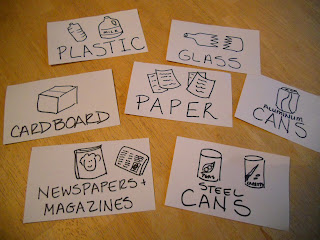This is a lovely project that encompasses a variety of art concepts: inking patterns, drawing hands, shading with colored pencils, depth, positive and negative space, and value (in the ribbon and in the patterns). But, in order to make it manageable, I suggest only drawing one hand on an oversize index card. This keeps the size relatively small and you should be able to actually get the piece done at some point. My 13-year-old student used a large piece of paper (maybe 11" x 14"?) and had two hands in the composition and divided up the space with lots of ribbons and she worked on it for over three weeks (each an hour long session) and it was only about 1/3 of the way done. It got to be pretty tedious for her, I think.
With this smaller format, you get all of the fun and it is just enough to keep it interesting. Here's how we did it:
Mini Hand Drawing With Pattern & Ribbon
Supplies Needed:
- Oversize (6" x 9") white index card, blank (or card stock)
- Pencil with eraser
- Sharpies (fine and ultra fine tips)
- Colored pencils, assorted colors
1. Place the hand you don't draw with onto the index card. You can make the hand go off the page a bit, but extend your fingers so that the space around your hand is broken up a bit by your fingers. Trace your hand with pencil.
2. Move your hand off of the paper and use it as a model to fill in some of the details of the hand you traced on your paper. Add wrinkles, rings, bracelets and fingernails. Don't add too many wrinkles though!
3. Draw a ribbon curling around your hand or through fingers and take care to have the ribbon divide up the negative space in your piece. Make it interesting!
4. Erase the lines of your fingers where the ribbon overlaps them. You'll want to take a minute and really make sure that your lines make sense--you don't want to ink something that shouldn't be there!
5. Trace the hand and the details on your hand with the ultra fine point Sharpie. Also trace the ribbon with the Sharpie.
6. Use your pencil to draw different patterns in the different sections of the background. Patterns can be made of lines, dots, squares, triangles, zig zags, and more!
7. Once you have your patterns down, ink them in with the Sharpies.
8. Erase all pencil lines.
9. Use the colored pencils to add color to the ribbons. Once you've built up nice layers of color, use darker colors in areas to create shadows.
My 9-year-old art student created her piece in two one-hour sessions. I'd think that this would take 3-4 regular class sessions if you were doing this project in a classroom setting.

















